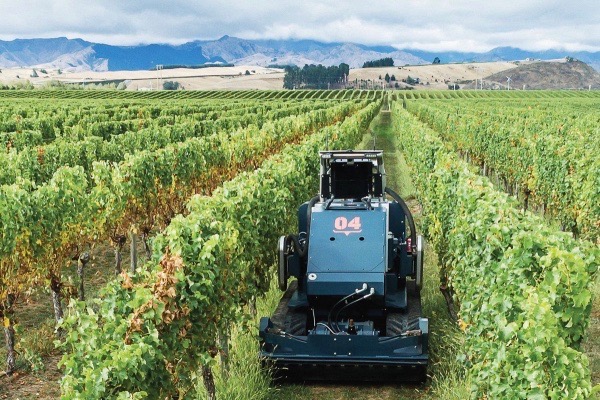Published on the 04/07/2024 | Written by Heather Wright

As Aussie farmers log ‘widespread’ use…
The Kiwi agritech sector is finding success piggy-backing off Australian government funded initiative – as the New Zealand government’s austerity measures see ‘not just fat, but muscle and even some bone’ cut from the sector.
“The trans-Tasman relationship ends up being a way of representing ourselves regionally.”
Brendan O’Connell, CEO of Kiwi industry umbrella group AgriTechNZ told iStart Kiwi companies are seeing success from listing on AgriFuture’s GrowAg platform, an online marketplace connecting global users with Australian – and Kiwi – agritech (or in Australian parlance, agtech) innovation opportunities.
“There is nothing like it in New Zealand, so we are encouraging all our members to list their offerings and potentials there, because when the world comes looking to this region, they see no distinction between Australia and New Zealand,” O’Connell says.
“The trans-Tasman relationship ends up being a way of representing ourselves regionally.”
He says some research groups have already won contracts through the platform, with many companies finding good business in Australia through the relationships. He cites Smart Machines, which does autonomous devices for the viticulture industry, as one company gaining ‘great success’ and benefiting from some of the AgriFutures environment.
New Zealand agritech generates around $2 billion in revenue, with the government’s goal to double industry revenue by 2030.
Despite that goal, the sector lost $5 million per annum in government cuts coming into force this week. O’Connell says there are now seven to nine less FTE from within government departments, mostly focused on working with industry groups to broaden the work industry itself was doing.
The cut programs focused on fostering global relationship developments and resulted in a significantly increased presence in global markets, AgriTechNZ says.
O’Connell is clear he’s not asking for the government to take over.
“It is industry’s responsibility to lead the way. We are not asking government to lead these things. We’re just saying when you see industry getting together and investing in things, and forging international pathways with global scale partners and the like, then government’s role is to set the conditions – which our current government is focusing on – but it’s also helping broaden that work.
“It’s a shared journey between industry and government and that’s the piece we are missing at the moment.”
O’Connell says while it is ‘just a moment in time’ and he’s confident it will get addressed, ‘at the moment we’re feeling the pain’.
Despite that, however, he says the Kiwi agritech scene is in a healthier space than ever.
“Some of that is done to the industry-government partnerships that have been happening over the last three or four years, and some of that is just industry really embracing what new innovations and pathways for science insights making it on to farm and orchard really means.”
He says the industry is maturing across all fronts, with a willingness and ‘real intent’ from the market to adopt the technology, and growing capability development from the solutions.
Agritech solutions have increasingly clear value propositions – something that just a few years ago, wasn’t necessarily so clear, or so clearly aligned to grower and farmer needs.
“Anything that is not relevant has faded away and people are much better at bringing solutions to solve actual problems.”
Another key problem noted previously has been a lack of connectivity between systems, leaving users having to double enter data.
“That situation is changing very significantly,” O’Connell says. “There is more data exchange between system than ever before and so the whole sector is maturing in terms of the level of data mobility and integrations.”
Large companies, including agricultural cooperative Ravensdown, Fonterra, and Zespri are also throwing their weight behind the sector establishing investment groups and investing in external technology companies, or in agritech accelerators like Sprout, like Silver Fern Farms has.
“There is often conversations around lack of access to capital, but most businesses that are really investable are finding pathways to capital, and they’re definitely finding business,” O’Connell says.
He says the sector is seeing ‘great growth’ with ‘some really exciting new companies coming along’. He’s predicting big things for early stage businesses such as Bovonic with its Quadsense mastitis sensors, and Cropsy with its vineyard AI-enabled vision system.
“They’re names people might not know now, but they’ll know about them in the future because they will become real New Zealand success stories,” he says.
“There is genuinely an insatiable global demand for solutions to improve our food production systems. There are existential challenges there in terms of both the amount of food but also reduction of impact of our food production systems that has just unassailable amount of demand out there. It’s just a question of what companies can do.”
A recent Roy Morgan survey, interviewing more than 1000 Australian farmers, found 72 percent are currently using agtech in their business, and 89 percent have used, or would consider using, agtech.
However, the figures also show that six percent of farmers have used agtech – and abandoned it.
Farm management software, electronic ID tags, satellite technology, precision farming, drones and remote sensors were the leading forms of agtech in use, with farmers citing less wastage, the ability to diagnose issues remotely, reduced labour, better understanding of new opportunities and more accurate record keeping among the big benefits.
The ability to monitor large areas closely, improved livestock management, increased profitability and reduced input costs were also cited.
But high cost of the technology remained a key stumbling block, with 66 percent of those surveyed saying it was the main barrier – almost double any other reason cited.
Not knowing enough about agtech was the second biggest issue, closely followed by poor connectivity.



























